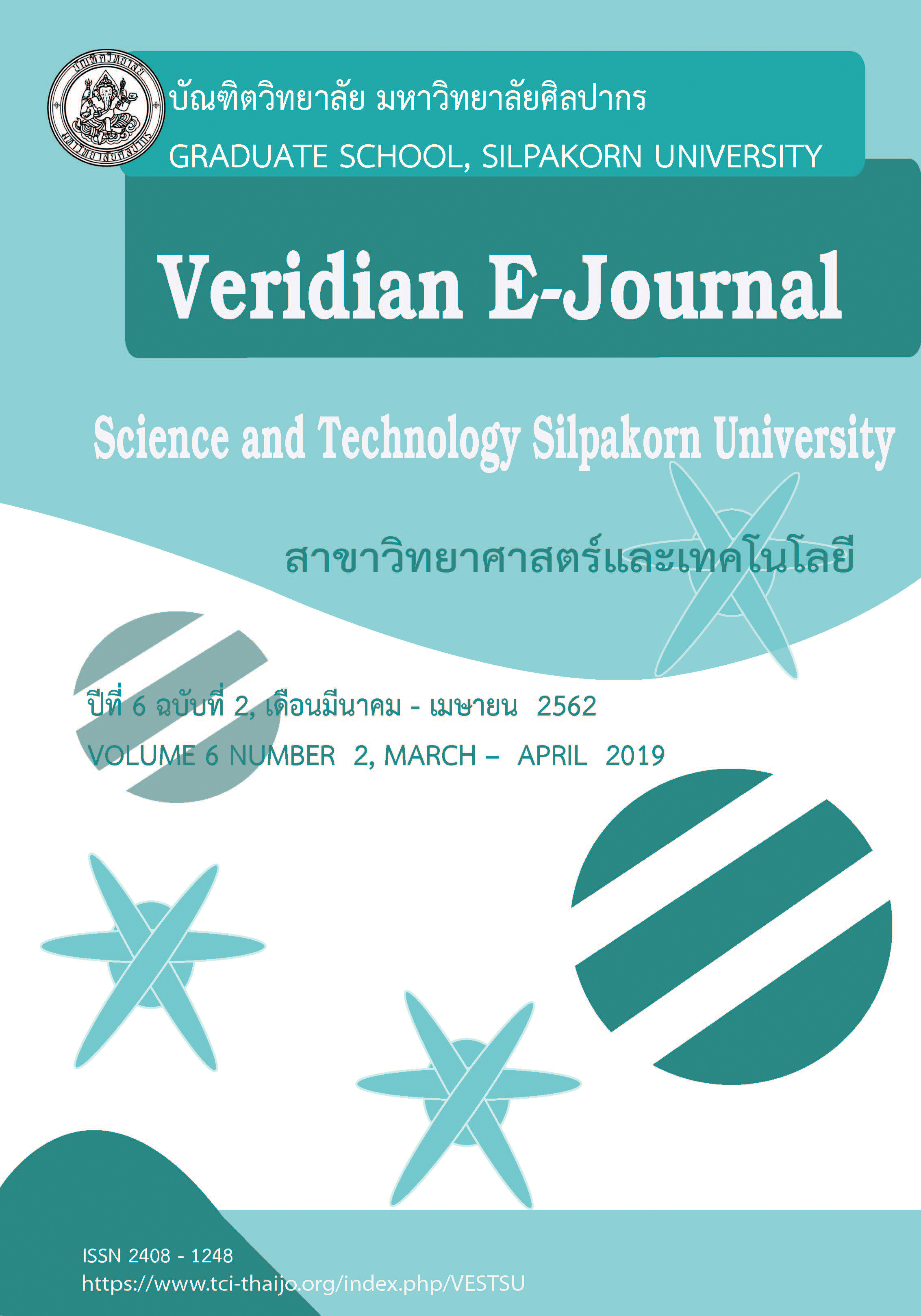การตรวจวิเคราะห์เชิงปริมาณของสารเสพติดกลุ่มแอมเฟตามีน เคตามีน และเมตาบอไลท์ต่างๆ ในปัสสาวะโดยเทคนิคลิควิดโครมาโทรกราฟฟี/ แมสสเปคโตรเมตรี/ แมสสเปคโตรเมตรี (Quantitative Analysis of Amphetamines, Ketamine and their Metabolites in Urine by Liquid Chromatography-Tandem Mass spectrometry (LC-MS/MS))
Main Article Content
Abstract
ปัจจุบันสารเสพติดกลุ่มแอมเฟตามีน เช่น ยาบ้า ยาอี ยาเลิฟ รวมทั้งเคตามีน และเฟนเทอร์มีน ถือเป็นกลุ่มยาและสารเสพติดที่มักนิยมกันในประเทศไทย การตรวจพิสูจน์หาปริมาณยาและสารเสพติดในปัสสาวะจึงมีความสำคัญมากสำหรับงานด้านนิติวิทยาศาสตร์ เนื่องจากผลการตรวจพิสูจน์สามารถนำมาประกอบการพิจารณาคดีของผู้กระทำความผิด และสามารถประกอบการหาสาเหตุการเสียชีวิตได้ งานวิจัยนี้จึงมีวัตถุประสงค์เพื่อพัฒนาวิธีการตรวจวิเคราะห์ปริมาณยาและสารเสพติดจำนวน 8 ชนิด ในปัสสาวะโดยอาศัยเทคนิคลิควิดโครมาโทรกราฟฟี/ แมสสเปคโตรเมตรี/แมสสเปคโตรเมตรี (LC-MS/MS) และตรวจสอบความใช้ได้ของวิธี การวิเคราะห์ใช้ตัวอย่างปัสสาวะ 100 ไมโครลิตร ผ่านกระบวนการสกัดด้วยตัวทำละลาย ระเหยแห้ง และละลายกลับด้วย mobile phase แล้ววิเคราะห์ด้วย LC-MS/MS สำหรับการแยกทาง Chromatographic อาศัยคอลัมน์ Agilent Poroshell 120 EC-C18, 2.1 mm × 100 mm, 2.7µm particle size ใช้เวลาสำหรับการวิเคราะห์เพียง 9 นาที และการวิเคราะห์สำหรับ Mass spectrometric อาศัย electrospray ionization แบบ positive-ion และโหมด multiple reaction monitoring (MRM) ด้วยการใช้ collision energy ที่เหมาะสมกับสารแต่ละชนิด การศึกษาสามารถหาปริมาณยาและสารเสพติดได้ในช่วง 50-1500ng/mL และเทคนิคนี้มีผลการเคราะห์ตามพารามิเตอร์ต่างๆ ดังนี้ มีค่า LOD คือ 2 5 10 และ 15ng/mL LLOQ คือ 50 ng/mL ความเป็นเส้นตรง (r2) มีค่ามากกว่า 0.99 ในทุกๆชนิด สำหรับค่า within-precision และ between-precision (%RSD) คือ 1.5-19.4% และ 1.1 -9.5 % ตามลำดับ ไม่มีผลของการตกค้างของสารตัวอย่างในระบบการวิเคราะห์ เมทริกซ์ไม่มีผลต่อการวิเคราะห์ ยกเว้น Nor-ketamine และ Phentermine ที่ความเข้มข้นต่ำๆ นอกจากนี้ยาและสารเสพติดมีความคงทนที่อุณหภูมิห้องตั้งแต่ต้นถึง 30 ชั่วโมง การพัฒนาวิธีการตรวจวิเคราะห์นี้สามารถนำมาประยุกต์ใช้กับตัวอย่างปัสสาวะได้จริง จากตัวอย่างทดสอบทั้งหมด 13 ตัวอย่าง ที่ได้สนับสนุนจากกลุ่มตรวจพิสูจน์ทางเคมี สถาบันนิติวิทยาศาสตร์ ได้ผลการวิเคราะห์ที่เปรียบเทียบกับเทคนิค GC-MS ที่ไม่แตกต่างอย่างมีนัยสำคัญ และด้วยประสิทธิภาพที่สูงกว่า คือ ใช้ปริมาณตัวอย่างน้อยกว่า เวลาวิเคราะห์สั้น มีความถูกต้อง แม่นยำสูง ดังนั้น จึงสามารถใช้เทคนิค LC-MS/MS นี้แทนได้อย่างมีประสิทธิภาพ
Amphetamines, MDMA, MDEA, Ketamine and Phentermine have been the most commonly abused drugs in Thailand. Quantitative analysis of drugs in urine has the important for prove in forensic science. The concentration of abuse in urine sample can be taken for inquest of suspect and determine the suspect’s cause of death. This study aimed to evaluate a more effective approach to simultaneously quantify these 8 analytes in urine by Liquid Chromatography-Tandem Mass spectrometry (LC-MS/MS). Samples (100 uL) were extracted via liquid-liquid extraction, evaporated and reconstituted in the mobile phase for injection into the LC–MS-MS. Chromatographic separation by an the Agilent Poroshell 120 EC-C18, 2.1 mm × 100 mm, 2.7μm particle size. The total run time of the method was 9.1 min. Mass spectrometric analysis was performed by electrospray ionization in positive-ion multiple reaction monitoring mode with optimized collision energy for each analytes. This method used to quantitate abused drug and their metabolites with range 50–1,500 ng/mL. Analytical parameters evaluated and resulting data are as follows: (i) LOD was 2, 5, 10 and 15ng/mL; (ii) LLOQ was 50ng/ml; (iii) calibration linearity (r2) for all analytes was >0.99; (iv) within-precision and between-precision (%RSD) were 1.5-19.4% and 1.1 -9.5 % respectively. No effect of carryover and matrix effect except for Nor-ketamine and Phentermine at low concentrations. The analytes were stable at room temperature for 30 h. This method was successfully applied to the analysis of specimens collected from 13 unknown death cases and 15 known cases from Forensic Chemistry section, Central of Situation of Forensic Science, and the results comparison with reference GC-MS were not significantly different. The LC–MS/MS analysis was as high efficiency (less samples, short time, precise and accurate) In conclusion; the LC–MS/MS method is robust, reliable and can be used instead.

